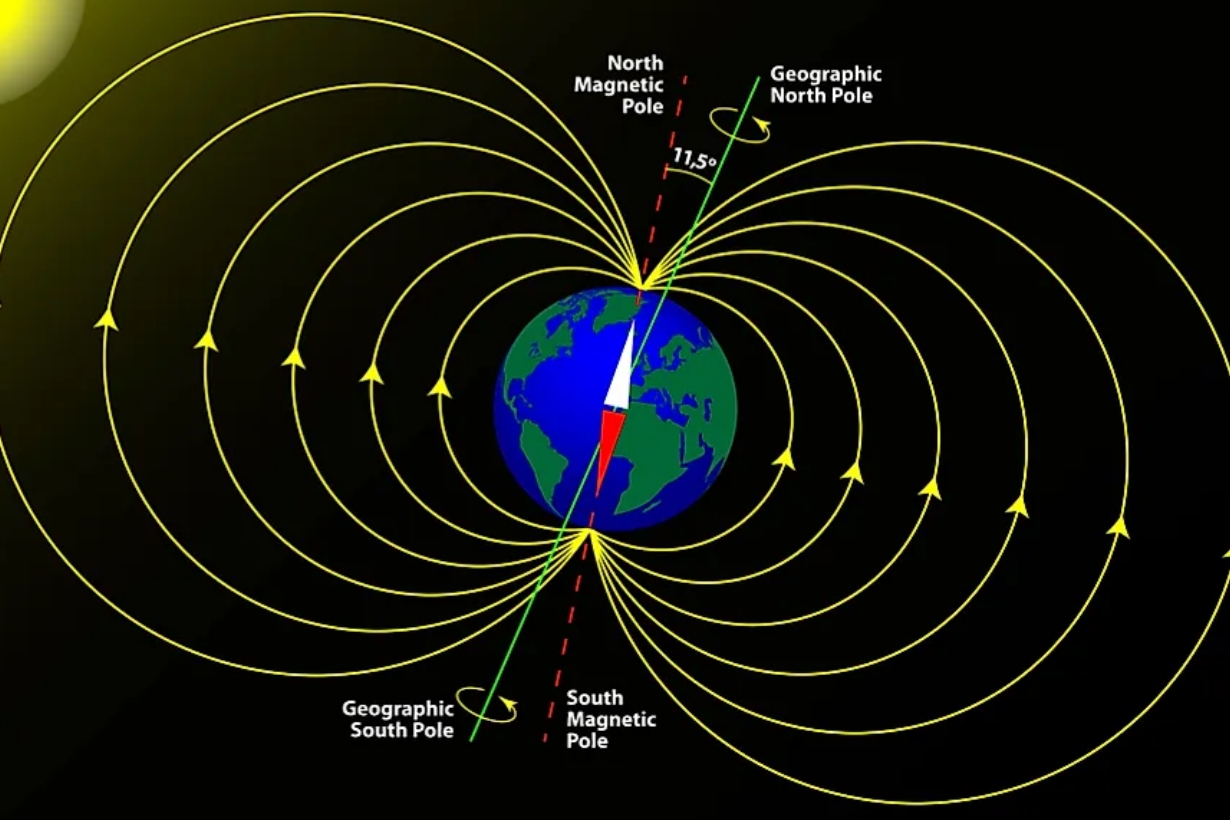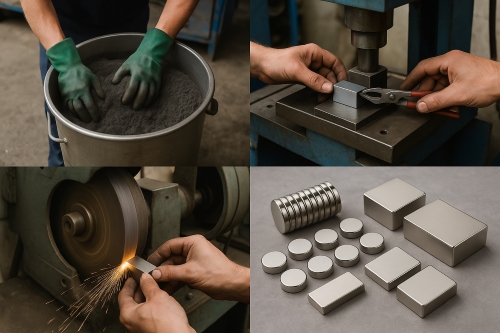A Brief History of Magnets and Magnetic Materials
Magnets are ubiquitous in our daily life, from the little fridge magnets that hold up a note to the powerful magnets in electric motors, MRI machines, and wind turbines. Understanding the materials that create magnetism, the types of magnets, and the magnetic metals provides an appreciation of how the invisible force powers technology and industry.

What Is Magnetism?
Magnetism is a physical phenomenon resulting from the motion of electric charges, and more precisely, the spins of electrons. All electrons are tiny magnets and possess a magnetic moment that contributes to the overall magnetic activity of the material. When the magnetic moments of an enormous number of electrons all point in a single direction, their combined action produces a macroscopic magnetic field that we sense as magnetism. This is why certain materials are strongly magnetic and others are weakly magnetic or nonmagnetic.
What Causes Magnetism?
Not all materials are magnetic, and not all magnetisms are equal. In ferromagnetic materials, such as iron, cobalt, and nickel, the magnetic moments of the electrons spontaneously align in small regions called magnetic domains. When the domains align, the material has a strong permanent magnetic field.
Weaker magnetic properties are held by other substances. Paramagnetic substances have unpaired electrons and thus may be attracted by magnetic fields but cannot retain magnetism after the field has been removed. Diamagnetic substances, such as copper, silver, and bismuth, develop a weak opposing magnetic field if an external field is applied, and this is generally very faint and can be detected only with sensitive instruments.
A substance's potential to be magnetized depends on its atomic structure, electron configuration, and temperature. Iron, for example, is not ferromagnetic above 770°C, its Curie temperature, because thermal energy disrupts the alignment of magnetic domains.
Further reading: Ferromagnetic Vs. Paramagnetic Vs. Diamagnetic
What Are the Types of Magnets?
There are three fundamental types of magnets:
1. Permanent magnets – They retain their magnetism without an external field. Neodymium magnets (NdFeB), samarium-cobalt magnets (SmCo), ferrite magnets, and alnico magnets are some of them. They are used in electronics, motors, generators, and magnetic storage devices.
2. Temporary magnets – Soft iron and other such materials are magnets only as long as an external magnetic field is present. They lose their magnetic nature when the external field is removed. Temporary magnets find application in electromagnet and transformer cores.
3. Electromagnets – Created when electrical current passes through wire coils, electromagnets create a magnetic field that can be turned on and off. They are utilized in electric motors, MRI machines, maglev trains, and lifting equipment for industry.
Further reading: What Is a Permanent Magnet?
What Are Magnets Made Of?
What a magnet is made of greatly determines that magnet's strength, lifespan, and application. Permanent magnets today are predominantly alloys:
• Neodymium magnets (NdFeB) – Made from neodymium, iron, and boron, they are extremely strong magnets for high-performance uses.
• Samarium-cobalt magnets (SmCo) – A hybrid of samarium and cobalt, with excellent stability at high temperatures and corrosion resistance.
• Ferrite magnets – Made from iron oxide and barium or strontium carbonate, these magnets are lower in cost and have high corrosion resistance.
• Alnico magnets – These are made from aluminum, nickel, and cobalt and possess modest magnetic strength with high temperature resistance.
What Materials Are Magnetic?
The inquiry into what materials are magnetic is at the forefront of every exploration of how magnets function. The magnetism of a material depends on the orientation of its electrons and if there are unpaired electrons within its atomic composition.
• Ferromagnetic materials have strong inherent magnetism due to aligned magnetic moments. They include metals like iron, cobalt, and nickel, which are the classical examples of magnetic metals. These materials can be permanently magnetized and have a strong magnetic field.
• Ferromagnetic substances, such as ferrites, have opposing but unequal magnetic moments, which give rise to a net magnetic effect. They are widely applied in permanent magnets for motors, speakers, and magnetic recording devices.
• Paramagnetic substances, such as aluminum, platinum, and certain rare-earth elements, are weakly attracted by magnetic fields but do not form permanent magnets.
• Diamagnetic substances, i.e., copper, silver, and gold, are weakly repelled by magnetic fields and cannot be magnetized.
FAQs
Q: Are all metals magnets?
A: No. Only those metals which possess unpaired electrons, i.e., iron, cobalt, and nickel, are strong ferrimagnets.
Q: Why are some magnets stronger than others?
A: Strength depends on the material composition, atomic structure, and magnetic domain alignment. Alloys such as neodymium-iron-boron give high magnetic density.
Q: Do magnets lose their magnetism?
A: Yes. A magnet will lose its strength if it is exposed to high temperatures, physical impacts, or strong opposite fields.
Q: Why are ferrite magnets used so widely?
A: They are inexpensive, corrosion-resistant, and easy to produce in large quantities, which makes them well suited for use in speakers, motors, and sensors.















